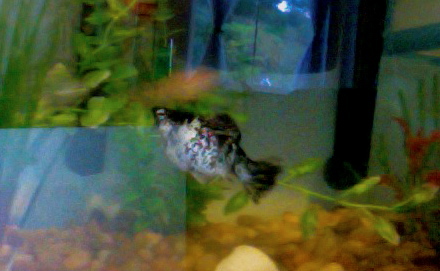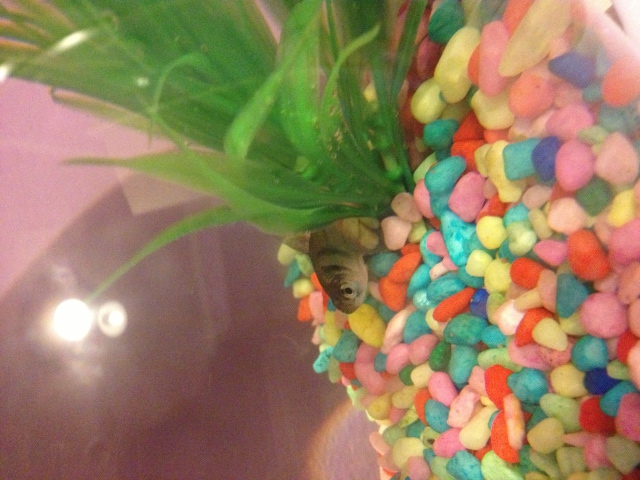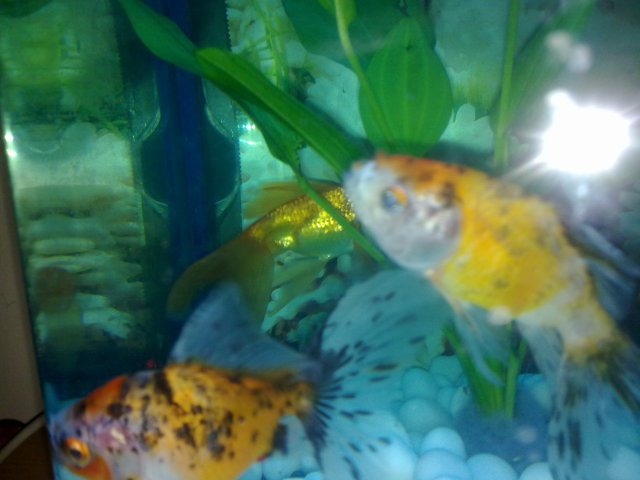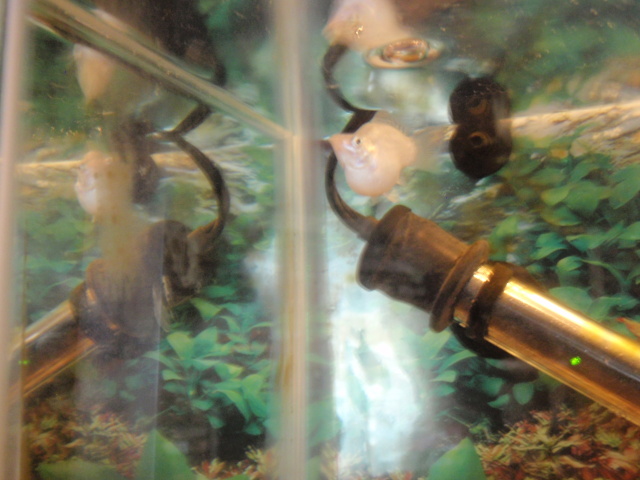QuestionHi, about two weeks ago two very small feeder comet
goldfish were forced on me. I was not prepared to take
care of them but I took them anyways because they would
have been flushed. The tank I have holds about 3-4 litres of water and I know that this is not big enough. I also do not have a filter.
One of them started getting ammonia burns so I started doing a 20% water change every day and a 30-40% water change every week. I have started using melafix to try to heal it's ammonia burned fins.until yesterday they seemed prefectly happy.
Yesterday I noticed that the two of them are spending a lot of time floating around at the top of the tank instead of searching through the gravel like they usually do. They both act sluggish and sickly and the one that has ammonia burns also has clamped fins now. They still eat
but they're not enthusicatic like they were before.(I am feeding them goldfish flakes, and spinach. Every small amounts throughout the day) I am trying to
get a much bigger tank and a filter but this probably won't happen for maybe a month or more.
Is changing the water so often effecting my fish?
Is the water too low in oxygen? If so, how is this possible since I change the water often and it's not a bowl so there should be enough surface area.
What can I do to save my goldfish and keep them alive for a couple more months so that I can get a proper tank?
AnswerHi Sammie,
Goldfish need regular water changes to prevent toxic ammonia building up. Goldfish urine is virtually pure ammonia and their faeces rot down to produce ammonia. If the tank you have set-up for them is a new set-up then the ammonia will peak naturally anyway. So, with that in mind, I'd carry on doing the water regular changes that you are doing.
Modern tanks have a tendency to let oxygen levels drop far too low. Basically because of the depth and shape of them. Goldfish tend to suffer from oxygen-starvation and will spend hours lingering at the surface gasping at oxygen-rich surface water.
To keep oxygenation high you'll need to keep the water surface constantly churning. Monitor the temperature of the tank as well as cold water has far more saturated oxygen than warm water.
You can test the dissolved oxygen in your tank with a mini test kit - however, these are either inaccurate or ridiculously expensive. The saturated oxygen levels should be at 8 and never below 5.5
Tom

 betta having a rough go
Question
betta fin
Hi, I got my daughter a betta about
betta having a rough go
Question
betta fin
Hi, I got my daughter a betta about
 My Aquarium
Question
Dalmatian Molly
Alright wel
My Aquarium
Question
Dalmatian Molly
Alright wel
 Black widow (tetra)
Question
Tetra
Hi there,
I am a very concerned f
Black widow (tetra)
Question
Tetra
Hi there,
I am a very concerned f
 Death of gold fish
Question
The fish in the right
I have a 15 gallon tank
Death of gold fish
Question
The fish in the right
I have a 15 gallon tank
 Pregnant Balloon Molly
Question
Pregnant Balloon Molly
This balloon molly has
Pregnant Balloon Molly
Question
Pregnant Balloon Molly
This balloon molly has